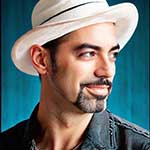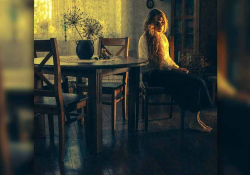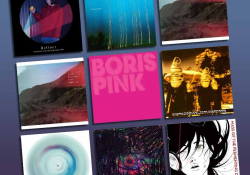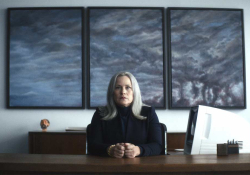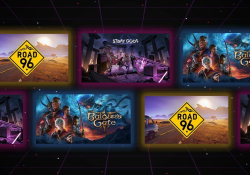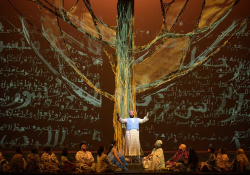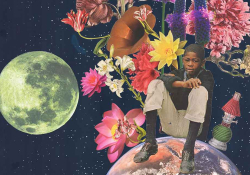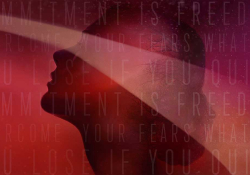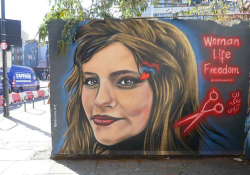Here I Am, Lord: The Devotional Art of Maryam Lamei
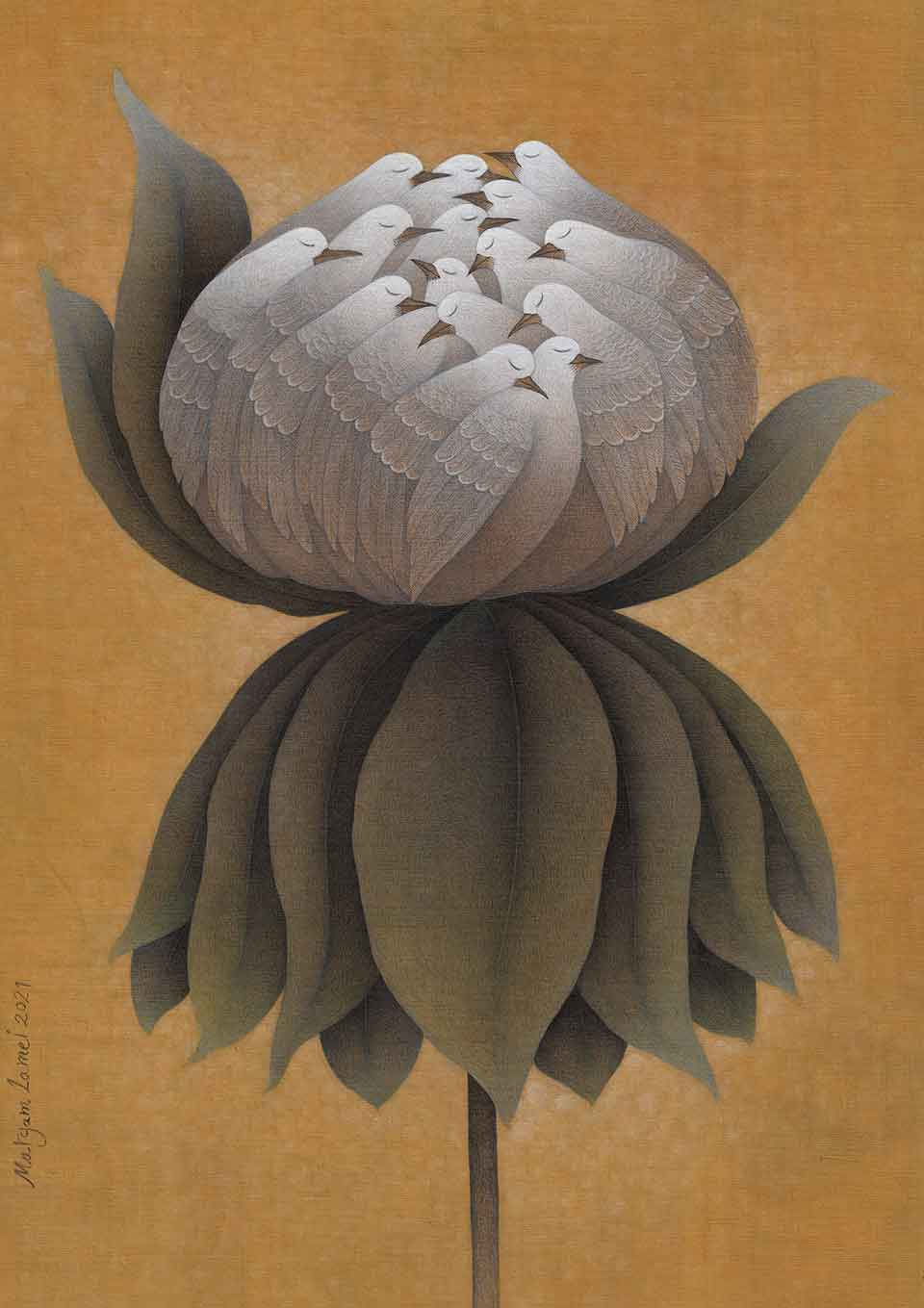
Searching for solace following the events of October 7, Yahia Lababidi discovered Iranian visual artist Maryam Lamei Harvani, who is “adept at braiding her explorations of love on the physical plane with devotion on a higher plane.” Lababidi finds in her art the suggestion that “if we recognize the overwhelming beauty surrounding us and regard it with a proper sense of awe, we might honor the sanctity of all life.”
As someone of Palestinian background, I’ve been on the hunt for a hint of humanity in the daze of the two months following October 7. Typically, I search for pinpoints of light in praise poetry, such as Rita Dove’s “Transit,” in which she writes: “while in the midst of horror / we fed on beauty – and that, / my love, is what sustained us.” When the encroaching darkness proves too great, I turn to the visual arts for further consolation, such as the elegiac elegance of Palestinian painter and national treasure, Sliman Mansour. More than a few times, in the waking nightmare of this apocalyptic time, I’ve revisited an iconic painting by Mansour depicting a Palestinian mother surrounded by her small children in the tranquil setting of their village. The woman is gazing up with longing at the star-festooned night sky, which some children seem to be reaching out for. The painting is three-fourths glowing sky, one-fourth muted land, and hovering above the maternal figure, luminous like a moon, is a giant dove carrying an olive branch. Mansour’s serene painting is fittingly titled Symbol of Hope.
Poet Emily Dickinson famously described hope as “the thing with feathers — / That perches in the soul — / And sings the tune without the words — / And never stops — at all —.” Unable to sleep the other night, at around 4am, I happened upon another hopeful artist and minor marvel, Maryam Lamei Harvani. Born in 1985 in Iran, Lamei is an impressively accomplished visual artist whose work is inspired by the Iranian Golo Morgh (Flower and Bird) paintings, a traditional Persian style in which the flower symbolizes the beloved and the bird represents the lover. Corresponding with the artist by email—she wrote in Farsi and I was assisted by AI—she volunteered this about her prayerful art: “In my paintings, the figures of flower and bird are depicted in a way that they seem to be in constant conversation [which] involves the glorification and enumeration of the attributes of God, the mention of His names, and the remembrance of the truth.”
As a pigeon fancier who has raised several generations of these gentle creatures, the first piece of Lamei’s that I encountered was love at first sight. Titled Birds Are Gathered in God, this captivating acrylic painting showcases Lamei’s meticulous technique and deep connection to her Persian artistic heritage. The birds gathered in this work seem to be in repose and almost appear as one radiant creature, folded upon one another in the shape of a flower bud, their gracefully intertwined wings doubling as petals. The giant green leaves framing them and gilded background exude a sense of harmony and peace. This mysterious, mystic work invites contemplation and reflection on the interdependence of all living things and a holy hush that exists in the natural world and beyond.
Lamei is careful to point out, however, that “in my paintings, the truth does not strictly have a spiritual or metaphysical aspect. It can also have a worldly and physical dimension, such as peace, moral salvation, or freedom.”
Clearly inspired by the beauties of nature—such as the gentian flower, which symbolizes victory and justice—Lamei is adept at braiding her explorations of love on the physical plane with devotion on a higher plane. Much of Lamei’s work produces a similar overall effect. Through stunning attention to detail, precision, and craftsmanship, this capable artist employs repetition of feathers and petals to summon an otherworldly calm. Plants and birds blend, swapping forms and straining toward the formless; a giant pair of outstretched wings extends from the eyeless (dreaming?) head of a surreal bird. In her artistic world of all possibilities, birds sprout from flowers and flowers take wing. Nothing is what it seems or sits still.
In Lamei’s artistic world of all possibilities, birds sprout from flowers and flowers take wing.
Invited into the trance of Lamei’s meditative art, one is reminded of Sufi literature. As in her Golo Morgh–infused art, celebrated Muslim poets—like Attar, Rumi, and Hafez—have sung the praises of the natural world, symbolically, to express mystical experiences and the ineffable nature of G_d. What can be seen in such questing art is employed as a metaphor to activate the longing for what is unseen. Beauty and love, here, lead us to their higher versions elsewhere. . . . The poetic depictions on Lamei’s canvases echo in this time-honored spiritual tradition and dramatization of the soul’s yearning for union, her motifs aligning with the Sufi concepts of ishq (divine love) and zikr (remembrance).
Using a five-hundred-year-old painting technique made up of thousands of fine lines and dots, Lamei is also an active member of Iran’s Miniaturist Association. Yet with a degree in graphic design, she has managed to bring a contemporary interpretation to this traditional art as well as her own distinctive style, so that one can immediately recognize her artworks. The artist put it to me in these words: “This departure from the content of flowers and birds as one of the branches of ancient Iranian painting has inevitably led to a transformation in its traditional form and the adoption of new content and form. My work has its own unique signature, which can be considered as a modern approach to painting.”
Lamei’s variations on the themes of this hallowed form have been embraced and rewarded in her home, where she has received national recognition, being awarded the National Art Prize as well as the art award from the Ministry of Science Research. Beyond this, Lamei’s artistic achievements have received international recognition, serving as a type of ambassador for the rich cultural heritage of Iran through her work.
The power of Lamei’s art seems to emanate from outside space and time, yet it reaches our mutilated world.
In a 1966 interview with Der Spiegel, typically cryptic German philosopher Martin Heidegger declared: “Only a God can still save us.” But, of course, believers from all faiths have always known this to be true. Heidegger’s contemporary and a mystical poet he admired, Rilke, wrote: “But the monstrosities and the murderous days, / how do you endure them, how do you take them? / I praise.” Lamei is such a praise artist. The power of her art seems to emanate from outside space and time, yet it reaches our mutilated world to convey hope and inspire resilience in the face of adversity, reminding us of the power of art to restore, heal, love. It seems to suggest that if we recognize the overwhelming beauty surrounding us and regard it with a proper sense of awe, we might honor the sanctity of all life.
Attending an ecstatic Miami book launch of the latest collection by poet and friend Richard Blanco in early December, I was moved to tears by a similar painterly affirmation in Blanco’s poem “Hineni”:
God of this sunset’s tangerine eye burning holy
between eyelids of sky and sea
— hineni — here I am —
called by your gaze to ask once again: what would you
have me do with the rest of this
undone life of mine
— here as I am?
Ft. Lauderdale
Editorial note: Three of Sliman Mansour’s paintings were included in the Summer 2021 “Palestine Voices” issue of WLT. George Henson’s review of Blanco’s Homeland of My Body (Beacon, 2023) headlines the review section in the January 2024 issue of WLT.
